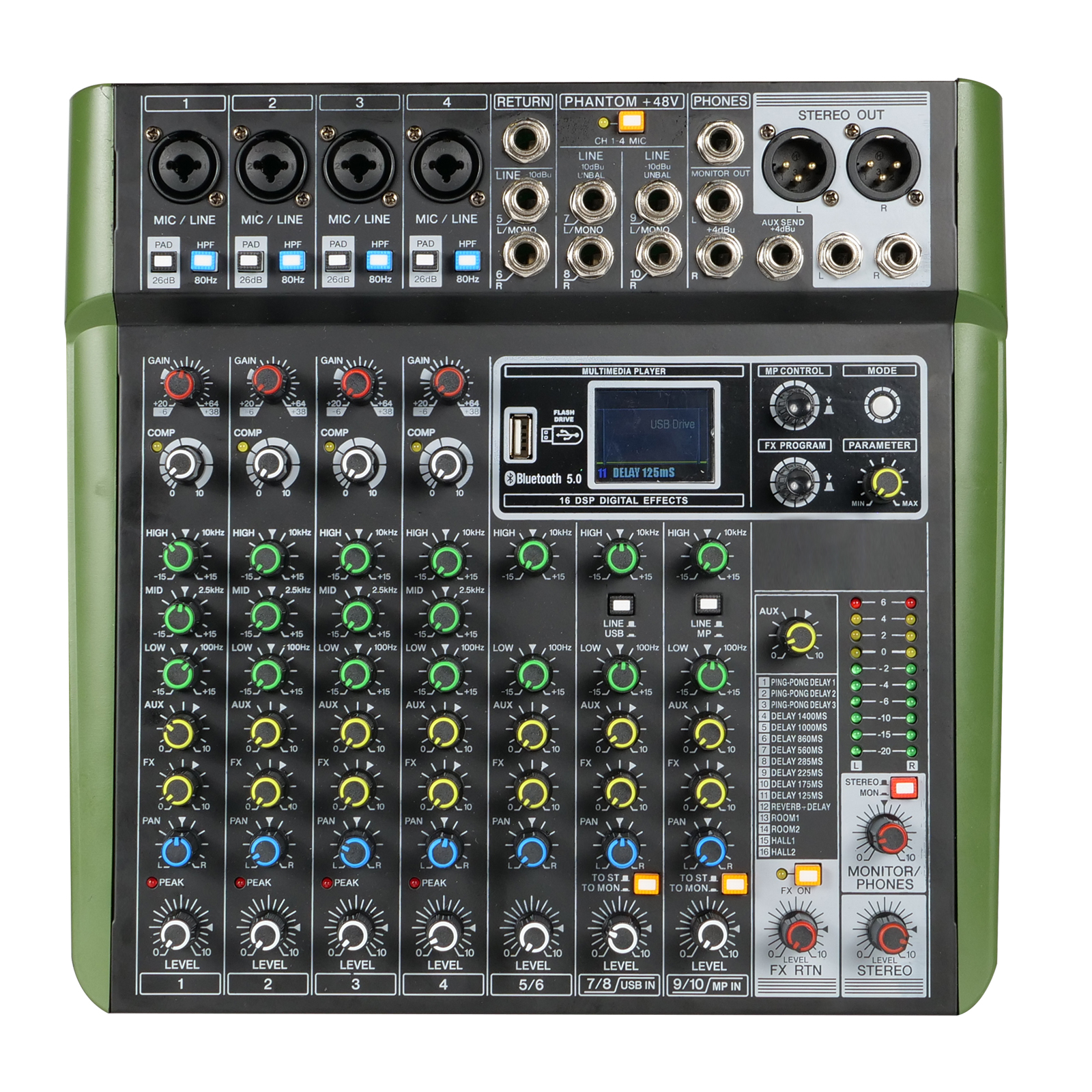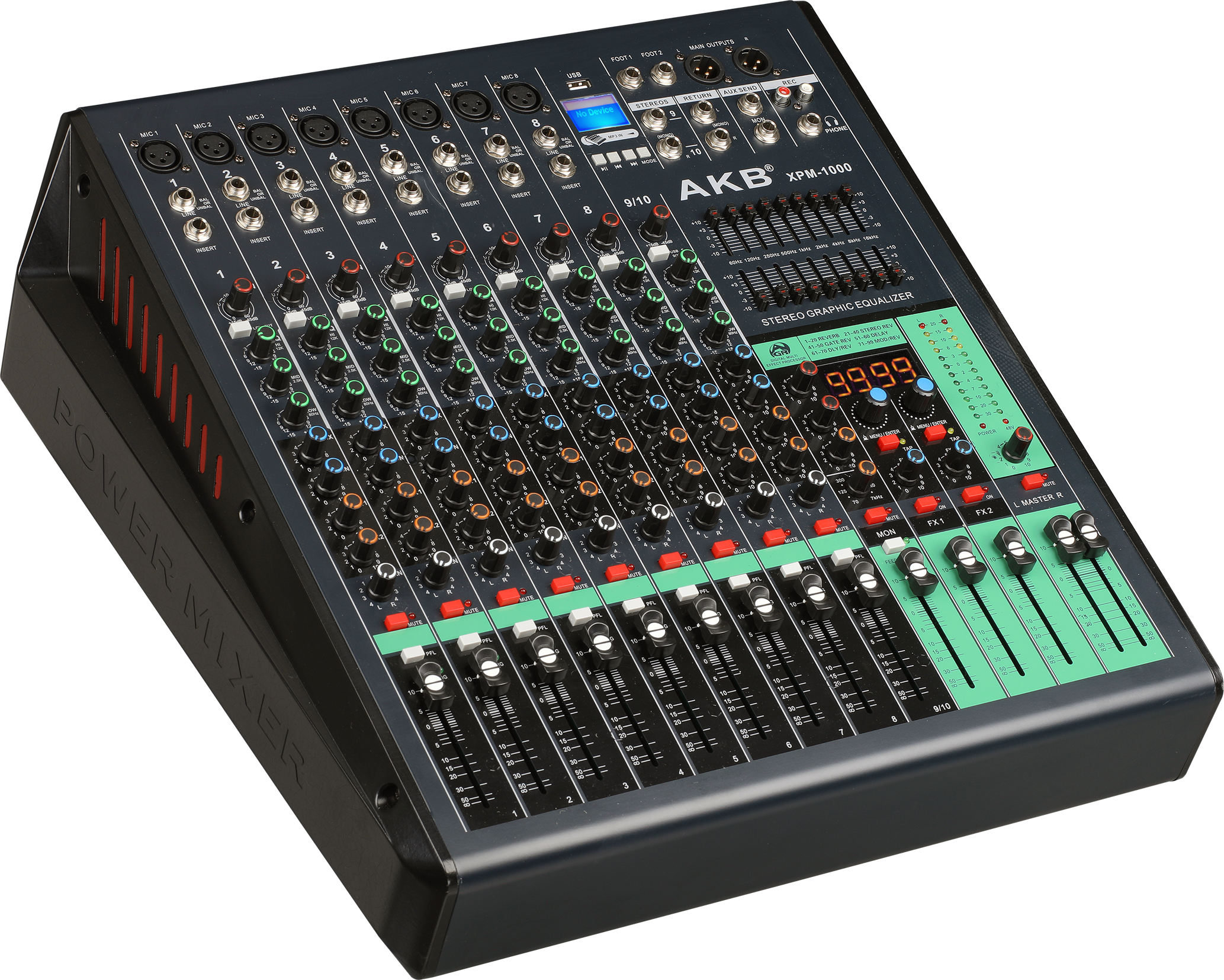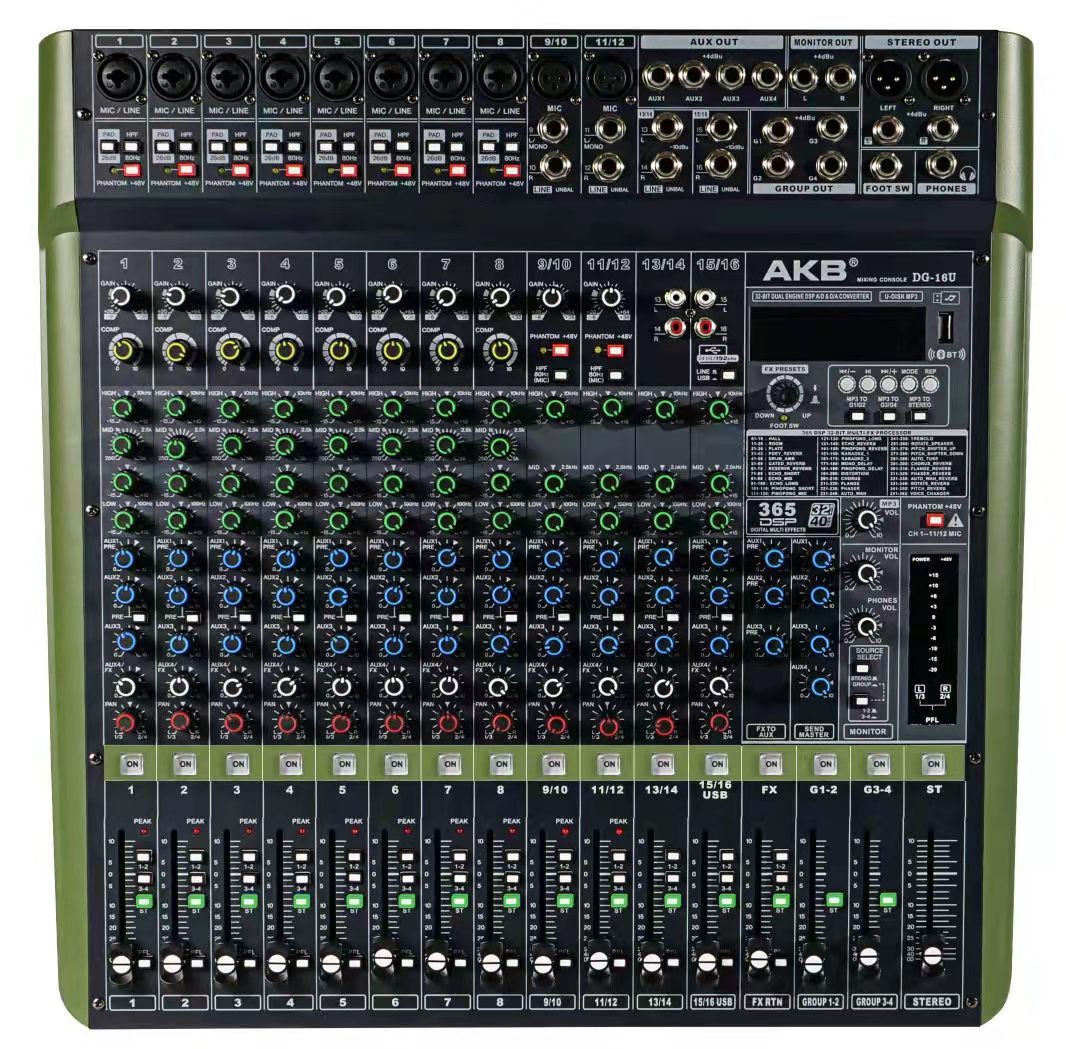- All
- Product Name
- Product Keyword
- Product Model
- Product Summary
- Product Description
- Multi Field Search
Views: 2 Author: Site Editor Publish Time: 2024-03-04 Origin: Site
In the world of audio engineering and songs manufacturing, the sound mixer is a vital tool. Whether you're recording an online efficiency, mixing tracks in a studio, or magnifying noise for an event, the mixer is the main center where all audio signals assemble, shaping and shaping them right into a harmonious mix. For many years, audio mixers have actually undertaken a considerable development, transitioning from cumbersome analog behemoths to sleek, function rich USB powered marvels. In this write-up, we'll look into the journey of audio mixers, from their modest starts to the reducing side USB mixers these days.

The Analog Age:
Before the electronic transformation, audio mixers operated entirely in the analog domain name. These mixers consisted of intricate circuits and physical parts that adjusted audio signals in real time. Analog mixers were characterized by their effectiveness and simpleness, including responsive handles and sliders that permitted designers to change degrees, EQ, and routing with accuracy.
Analog mixers can be found in numerous setups, varying from little portable systems for home studios to enormous consoles discovered in specialist recording workshops. These gaming consoles were often adorned with rows of faders, each corresponding to a various audio channel. Engineers would carefully balance levels, pan positions, and EQ setups to achieve the preferred sound.

The Surge of Power Mixers:
As modern technology advanced, so did the capabilities of sound mixers. The introduction of power mixers produced a brand-new era of benefit and adaptability. Power mixers incorporated amplifiers straight right into the mixer, getting rid of the demand for external amplification equipment. This assimilation made power mixers ideal for live sound support applications, where transportability and efficiency were extremely important.
Power mixers incorporated the performance of traditional analog mixers with integrated in boosting, supplying artists and audio designers a portable service for enhancing online efficiencies. These mixers featured a wide variety of inputs for microphones, instruments, and line level resources, in addition to onboard EQ and results processing.
Power mixers became the go to selection for bands, DJs, and event coordinators, giving a structured configuration for intensifying sound in venues of all dimensions. With their rugged construction and easy to use user interfaces, power mixers changed the means live noise was taken care of, leading the way for much more sophisticated developments in audio modern technology.

The dawn of the digital age brought about a seismic shift worldwide of audio engineering. Digital mixers emerged as the new criterion, using unmatched adaptability and control over audio signals. Unlike their analog equivalents, digital mixers processed audio in the electronic domain name, allowing for specific manipulation and storage space of audio data.
Digital mixers flaunted an array of features that were formerly unattainable with analog modern technology. Designers could save and remember presets, apply intricate signal processing algorithms, and also control the mixer from another location using computer system or smart phone. This newfound flexibility opened up a world of possibilities for audio support and studio recording applications.
Get In the USB Mixer:
While electronic mixers represented a significant jump forward, they were commonly large and expensive, limiting their ease of access to spending plan mindful customers. However, the development of USB mixers democratized electronic sound innovation, making it extra accessible to home studio lovers and little range manufacturers.
USB mixers bridged the gap in between typical analog mixers and electronic gaming consoles, supplying the very best of both globes in a small and budget friendly plan. These mixers included built in USB user interfaces, permitting customers to attach straight to a computer system for recording and playback. This integration streamlined the recording process, removing the need for outside audio user interfaces and intricate routing setups.
USB mixers additionally provided a host of additional attributes, such as built in effects, multitrack recording abilities, and onboard blending software application. These features made USB mixers a flexible solution for podcasting, real-time streaming, and content creation, empowering individuals to accomplish expert high quality results without breaking the financial institution.
The Future of Mixing:
As technology continues to develop, so too will certainly the capacities of sound mixers. Breakthroughs in electronic signal handling, connection, and interface design pledge to better boost the functionality and usability of mixers in the years ahead. From immersive surround stereos to AI powered blending formulas, the future of audio design holds boundless opportunities.
In conclusion, the advancement of sound mixers from analog behemoths to smooth USB powered marvels is a testimony to the relentless march of technical progression. From the humble beginnings of analog gaming consoles to the reducing edge capacities of USB mixers, these gadgets have played a critical duty fit the way we record, process, and recreate noise. As we look in the direction of the future, something is specific: the trip of audio mixers is far from over, and the most effective is yet ahead.
Exhibition Name: The 124th Canton Fair Booth number:5.1 L31 Date:15-19 Oct. 2018 Address: China export&import commodity exhibition center ( Pazhou pavilion)
Dear Sirs /Madam:We hereby sincerely invite you and your company representatives to visit our booth at the Canton Fair from April 15th to 19th on 2019.It would be a great pleasure to meet you at the exhibition .We expect to establish long-term business relations with your company in future .Exhibiti
OKSN Electronics Technology Co. Ltd.was established in 1997. It lies in the microphone production base--En'ping City, Guangdong Province, China.Our factory is a professional manufacturer for microphone integrated with designing,investment,produce and sell. The products include wire/wireless microp
Audio mixers, also known as mixing consoles or soundboards, are essential tools in the realm of audio production. Whether you're producing music, broadcasting live radio, or setting up for a live performance, audio mixers play a vital role in ensuring the sound quality is top-notch. In this comprehe
How to Connect a Wireless Microphone to a Sound System Connecting a wireless microphone to a sound system might seem daunting at first, but with the right steps, it becomes straightforward. Here’s a step-by-step guide to help you connect your wireless microphone system effectively: Unbox and Inspect
Wireless microphone systems have revolutionized the way we amplify and transmit sound, offering unparalleled freedom and flexibility for performers, presenters, and public speakers. Whether you're setting up a sound system for a live concert, a corporate event, or a simple public address system, und
What is the Best Frequency for Wireless Microphones? Wireless microphones have become essential in various settings, from concerts and theatrical performances to conferences and religious services. These devices offer the convenience of mobility without the hindrance of cables, making them a favorit
How to Install a Hinged Glass Shower DoorInstalling a hinged glass shower door can transform your bathroom, offering a sleek and modern look while also being highly functional. While the installation process might seem daunting, with the right tools and a bit of patience, you can successfully instal
An audio mixer (also known as a mixing board) has two primary jobs: It lets you blend and tweak the audio signals coming in from microphones, musical instruments, and other audio sources.It sends the mixed and polished signals to its output jacks, which connect to amplifiers, powered loudspeakers, o
In the age of wireless technology, the convenience of Bluetooth connectivity has revolutionized the way we interact with our devices. But what if you have a reliable wired microphone and want to connect it to a Bluetooth speaker for a seamless audio experience? Fear not, as we unravel the steps to b
In the realm of audio engineering, the tools wielded by professionals are as diverse as the melodies they craft. Among these indispensable devices, sound mixers, power mixers, and USB mixers stand out as pillars of audio manipulation and control. Whether you're a seasoned musician, a studio engineer
In the world of audio modern technology, wired microphones stand as enduring signs of clarity and precision. From intensifying voices on stage to improving the home entertainment experience in karaoke bars, these tools play an important function in transmitting noise with fidelity and reliability. A
Understanding Wireless In-Ear Monitor SystemsIn the ever-evolving world of music and live performances, the advent of the wireless in-ear monitor system has revolutionized the way artists experience and deliver their performances. This technology, often abbreviated as IEM, allows musicians to hear a
Do You Really Need an Audio Mixer?When it comes to producing high-quality audio, whether for music production, podcasts, live events, or broadcasting, the right equipment can make all the difference. Among the various tools and gadgets available to audio professionals, the sound mixer stands out as
Is Wireless Mic Better than Wired for Karaoke? Karaoke has become a beloved pastime worldwide, offering a unique blend of entertainment and personal expression. Whether it's a small gathering at home or a professional setup in a karaoke bar, the choice of microphone can significantly impact the expe
In today’s dynamic world of audio technology, cordless microphones have emerged as indispensable tools for professionals and enthusiasts alike. Whether you’re a musician, public speaker, educator, or performer, the convenience and flexibility offered by cordless microphone systems have revolutionize
In the world of audio production, the audio sound mixer is a fundamental piece of equipment. Whether you're setting up a home studio, broadcasting a live event, or producing a podcast, the audio mixer is indispensable for achieving professional-quality sound. This article delves into the functionali
In today's world, where mobility and convenience are paramount, cordless technology has revolutionized the way we perform and entertain. One area where this is especially evident is in the realm of karaoke. The advent of the cordless microphone has transformed karaoke sessions, offering unparalleled
In the realm of audio production, the sound mixer stands as an indispensable tool, wielding the power to shape and refine auditory experiences. Whether in the controlled environment of a studio or the dynamic settings of outdoor recording, the mixer serves as the conduit through which disparate soun
In the world of audio production, having a solid understanding of sound mixers is paramount. Whether you're a budding musician, a DJ, or a sound engineer, knowing how to set up and operate a 4 channel sound mixer can greatly enhance your audio projects. In this guide, we'll delve into the intricacie